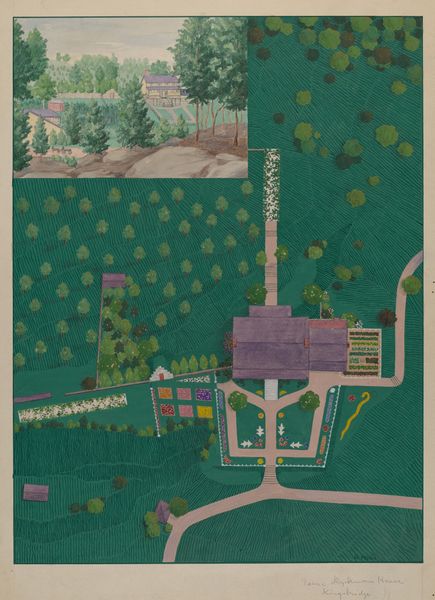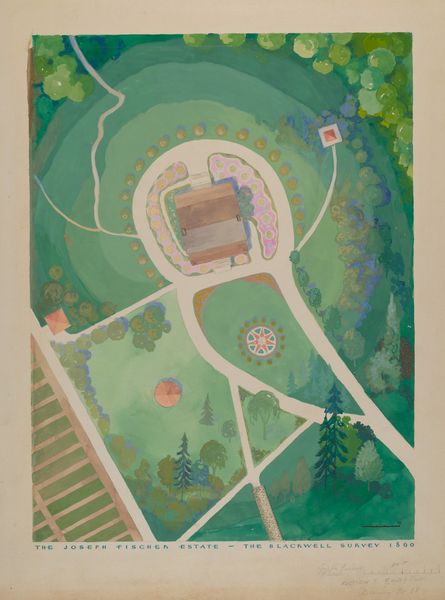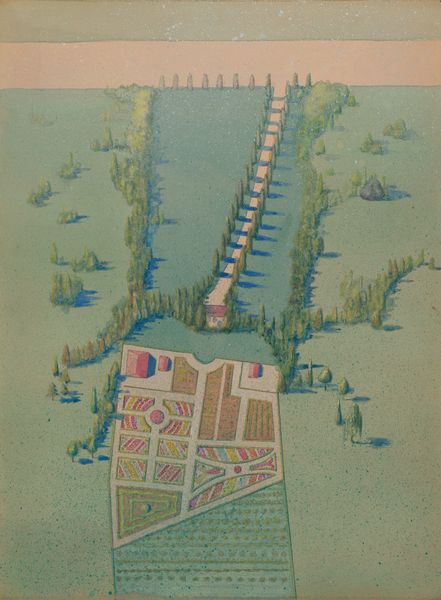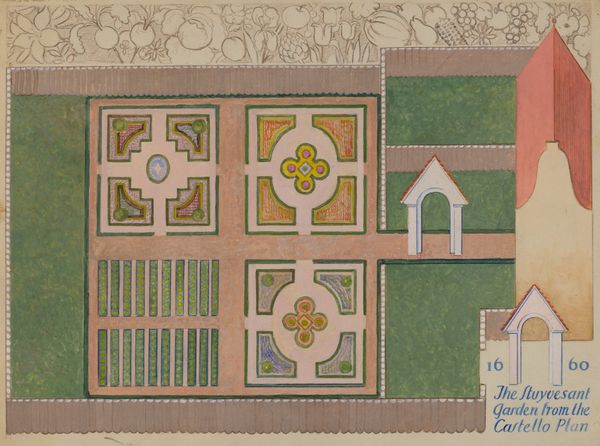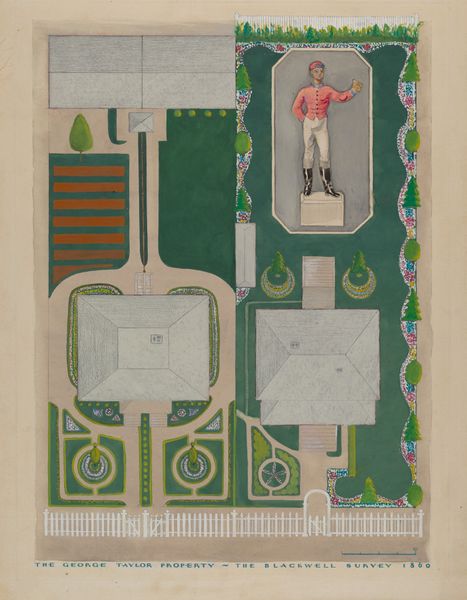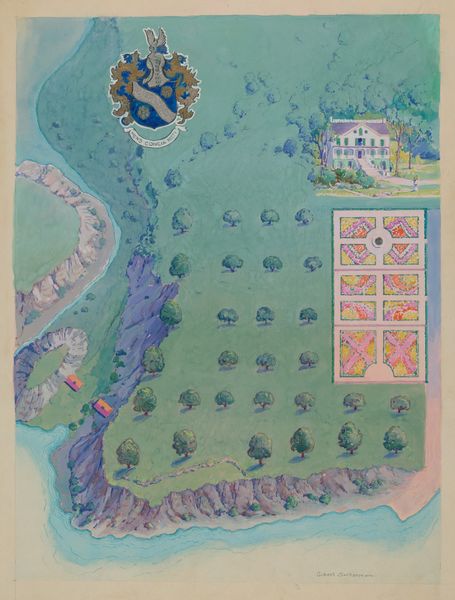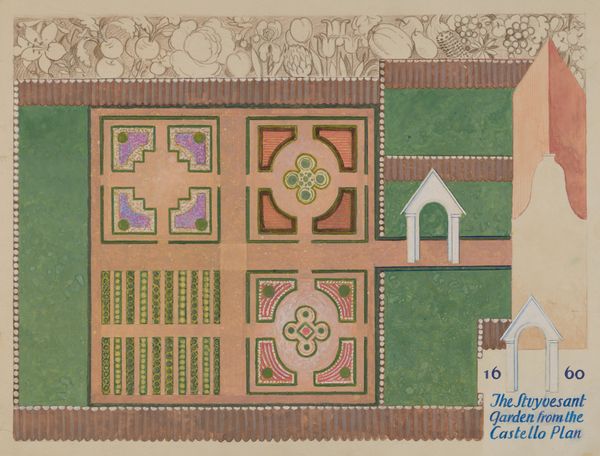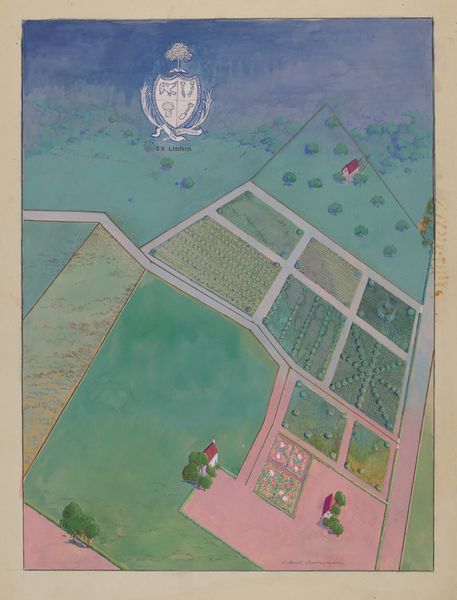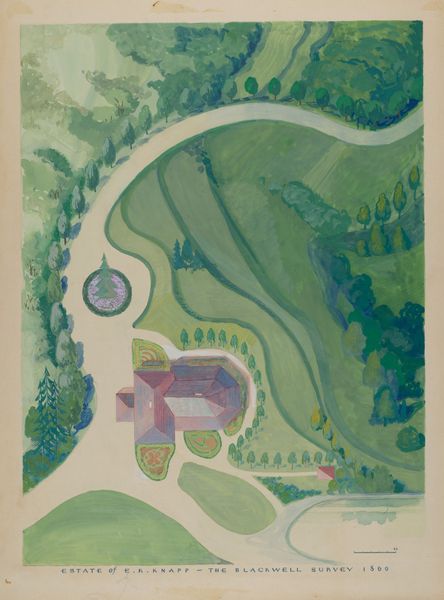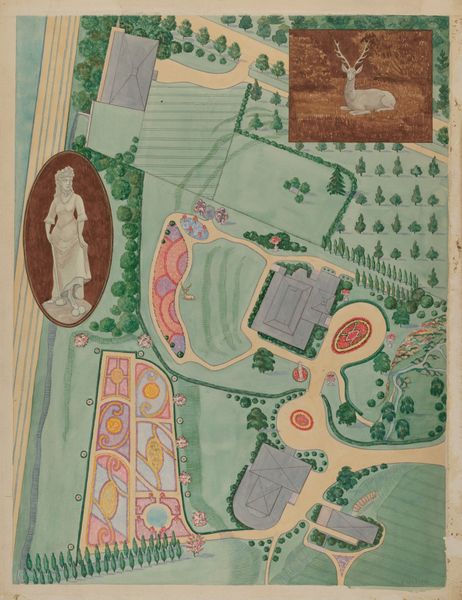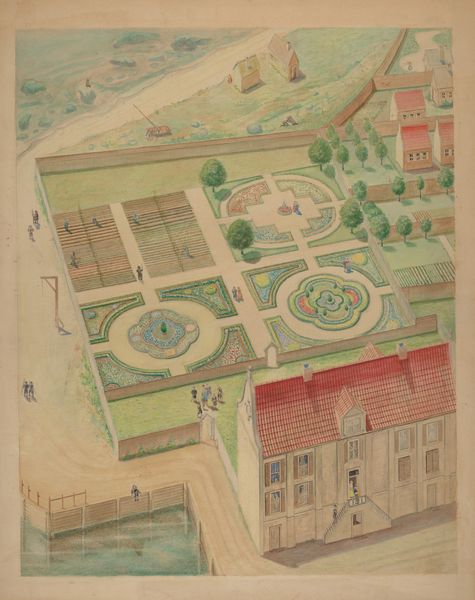
drawing, mixed-media, architecture
#
drawing
#
mixed-media
#
landscape
#
architectural drawing
#
architecture
Dimensions: overall: 51 x 34.9 cm (20 1/16 x 13 3/4 in.)
Copyright: National Gallery of Art: CC0 1.0
Editor: So this is “Ketteltas Estate,” a mixed-media drawing from around 1936 by Helen Miller. It’s a detailed plan of a formal garden and it feels very controlled, very symmetrical. What do you see in this piece? Curator: I see a deliberate effort to impose order and meaning onto the landscape. The symmetry itself is symbolic; it reflects a desire for balance, for harmony with an underlying ideal. The formal garden, with its precisely shaped beds and carefully placed trees, becomes a microcosm of a perfectly ordered world. Look at the star motif, how it’s both echoed and contained in each of the beds. What does that signify to you? Editor: Well, the star makes me think of maybe guidance or aspiration, but contained, it does feel a bit stifled maybe? Curator: Precisely. The artist uses symbols that reach back through centuries – the star, the ordered garden – yet frames them within the anxieties of her own time, the pre-war years where control and planning offered some solace against a looming chaos. Consider the very specific choices Miller makes. The East River bordering it all – the natural versus imposed, the known and unknown. Editor: I never would have picked up on that tension just from looking at it. So, you're saying it’s not just a garden plan, it's a commentary? Curator: It is precisely that. A mirror reflecting cultural anxieties and a testament to the human need to find meaning and control, however illusory, through symbolic landscapes. And how that memory persists through generations in this very rigid layout. Editor: Wow. I’ll definitely look at landscape art differently now. Thanks! Curator: My pleasure. There is so much that one sees by looking back in order to look forward.
Comments
No comments
Be the first to comment and join the conversation on the ultimate creative platform.


